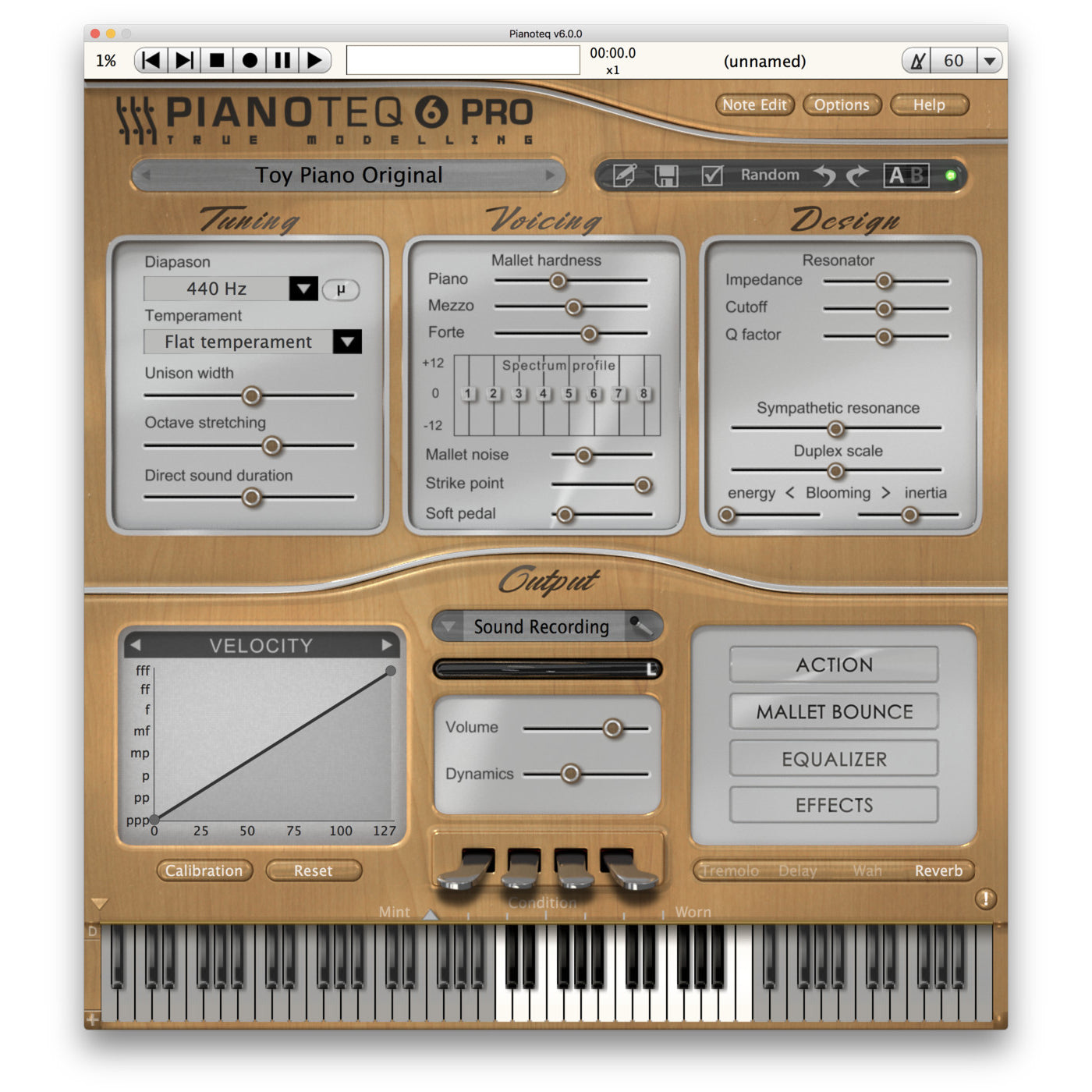Description
Pianoteq Celeste Virtual Instruments (Celesta, Glockenspiel, Toy Piano, Kalimba) || Your Digital Software Registration Code and Instructions Will Be Sent to You, Along With an URL Connecting You Directly to The Manufacturer, Who Will Provide You With Your Software Digitally. Please Be Aware That Software Is Non-Cancelable and Non-Returnable. If you have any questions about this product please do not hesitate to contact us. Guildwater Gear is an Authorized Pianoteq Dealer through the Xchange Market. There, You Can Find Us Among Their List of Authorized Resellers.
This pack includes four instruments: Celesta, Glockenspiel, Toy Piano and Kalimba. The Celesta has an appearance of an acoustic upright piano. It consists of metal plates stroke by felt hammers resembling piano hammers and there is also a sustain pedal. The timbre is very soft and subtle. The Pianoteq virtual copy is modelled after a modern five-octave German brand. The Glockenspiel is also made of metal plates but is stroke by hard metal mallets held by the musician, and is smaller and higher in pitch. The timbre is much more brilliant than the celesta. The Pianoteq virtual copy, modelled after a modern French brand, has been slightly extended to cover four octaves.
Often encountered as a child's toy, Toy Pianos are usually no more than 50 cm (20 inches) in width, and made out of wood or plastic. The sound is produced by small hammers striking metal rods. Its unique timbre resembles more the celesta or the glockenspiel than the piano. This unusual sound has been somewhat of a key appeal to many composers and performers through the centuries, who used the toy piano as a real musical instrument. The Pianoteq virtual copy is modelled after a two-octave Michelsonne toy piano and is extended to four octaves. The celesta is featured in Tchaikovsky's «Nutcracker» movement «Dance of the Sugarplum Fairy», the glockenspiel in Mozart's «Die Zauberflöte» (The Magic Flute), and the toy piano in Yann's soundtrack of the movie «Le fabuleux destin d'Amélie Poulain» («Amélie from Montmartre»). The Kalimba, also known as Mbira, is a small handheld instrument, originally from Africa. It is made of a solid wooden board with attached staggered metal tines. The Pianoteq virtual copy has a default range of 20 notes but can be extended to 88 notes.
Thanks to Pianoteq's physical model, the instruments come in several variants including an exclusive humanization feature for the strike point, achieving a variation that makes them more expressive sounding, particularly true for the glockenspiel where the musician never hits the plates at the exact same point. It is possible to add features of traditional pianos, such as damping, sustain pedal, and soft pedal.
System Requirements
Requires Pianoteq 3.6.2 or Higher
- Mac OS X 10.7 or later, Windows 7 or later, Linux (x86 and ARM)
- Audio Units / VST / AAX / NKS compatible
Pianoteq 6 facilitates your workflow by adding compatibility with the VST3 format and the ARM architecture (Linux version only, for example on Raspberry Pi 3 boards). VST3 is the latest plug-in platform developed by Steinberg, and is supported by many audio hosts. Compatibility with the ARM architecture means that Pianoteq 6 can be used with RISC based CPU's used in smaller Linux based consumer electronic devices. Furthermore, since Pianoteq 6.1, the NKS (Native Kontrol Standard) extended plug-in format from Native Instruments is supported.
Pianoteq Features
- Pianoteq is a physically modelled virtual instrument
- Optional instruments for purchase: upright, grand pianos, rock piano, electric pianos, harp, vibraphones, clavinet, celesta+glockenspiel, xylophone+marimba, steelpans
- Free instruments: KIViR historical instruments collection, bells and carillons.
- Unique adjustable physical parameters, such as unison width, octave stretching, hammer hardness, soundboard, string length, sympathetic resonance, duplex scale resonance.
- Progressive variation of the timbre (uses all the 127 MIDI velocities)
- Control of the dynamics in timbre and volume
- Polyphonic Aftertouch (particularly interesting for the clavichord)
- Realistic sympathetic resonances, including duplex scale
- Microtuning, supports Scala format *
- Adjustable mechanical noises (sampled or modelled)
- Built-in graphic equalizer
- Built-in graphic curve for key velocity, note-off and pedal
- Keyboard calibration assistant
- Ten types of pedals (that can be assigned to the four UI pedals): Sustain, Soft, Harmonic, Sostenuto, Super Sostenuto, Rattle, Buff Stop, Celeste, Pinch Harmonic, Glissando
- Progressive sustain pedal, allowing partial-pedal effects
- Convolution reverberations
- Effects: Tremolo, Wah, Chorus, Flanger, Phaser, Fuzz, Delay, Amp, Compressor, Mini-eq.
- Mallet bounce (note repetition)
- Instrument condition (mint to worn)
- Variable lid position *
- Five adjustable microphones *
- Multi channel - up to 5 channels *
- No quantization noise (32-bit internal computation)
- Renders high resolution MIDI formats CC#88 and Disklavier XP.
- Installs and loads in seconds
- Extremely small file size (less than 50 MB)
- Excellent for use on modern laptops
- Extended key range (105 keys = 8+2/3 octaves) for the grand pianos Steinway D and K2
(* in Standard and PRO versions)

